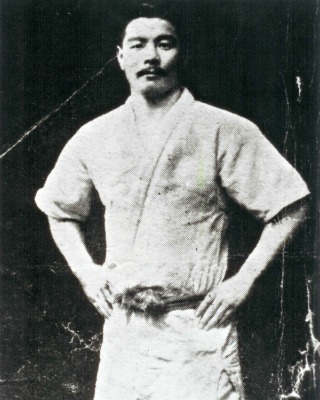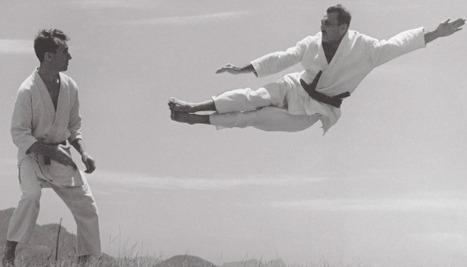The History of Brazilian Jiu-Jitsu
What is BJJ?
Brazilian Jiu-Jitsu (BJJ) is a martial art and combat sport that was developed in Brazil and derived from judo.
There is a heavy emphasis on grappling techniques and on ground-based fighting and takedowns.
Punches, kicks and other strikes are not traditionally utilised in the art, instead it focuses on choke holds and joint locks that are designed to cause an opponent to submit,
pass out or be rendered unable to continue.
Talk the Talk
Despite what the name may suggest, Brazilian jiu-jitsu was not developed from Japanese jiu-jitsu but from the art of judo.
Judo itself was developed from jiu-jitsu by Kano Jigoro but when it was introduced to Brazil, it was still in its early stages of development and was at the time often referred
to as Kano jiu-jitsu and more generically just as jiu-jitsu.
As a result, the art commonly known as judo today became known as jiu-jitsu in Brazil.
Later, when members of the Gracie family went to the USA to spread their martial art, they advertised it as Brazilian jiu-jitsu and Gracie jiu-jitsu to differentiate it from the styles of jiu-jitsu that were already being taught in the USA.

Brazilian jiu-jitsu (also known as Gracie Jiu-Jitsu and commonly referred to as BJJ) was established in the first half of the twentieth century after a well-known judo fighter, Mitsuyo Maeda, moved to the country and taught his art there.
In the years that followed the techniques he taught were modified, especially by Helio Gracie, putting more emphasis on the use of leverage to allow smaller people to beat opponents much larger than themselves.
Mitsuyo Maeda
Mitsuyo Maeda was instrumental in the history of BJJ and was a judo expert, being taught by the founder of that art, Jigoro Kano. He was one of the best judoka Japan has ever seen, so much so that he was given the nickname Conde Koma (Count Coma) because of his ability to render his opponents unconscious. From 1904 Maeda, the son of a sumo wrestler, began demonstrating his art across Europe, the USA and South America and despite being only five feet five inches tall, he fought many opponents dispatching all of them along the way.
At the end of the tour in 1914, he decided to move to Brazil as part of a large Japanese immigration colony where he continued to accept and issue challenges to fight, gaining a reputation as he dispatched his opponents one after another. In one instance he fought an expert in the Brazilian martial art capoeira known as Pe de Bola who was even allowed to bring a knife to the fight. At six feet three the capoeirasta towered over his opponent but was soon disarmed, taken down to the ground and finished off. Throughout his illustrious career, Maeda competed in over a thousand no-rules fights, some put the number as high as two thousand and was so good he is said to have retired undefeated.
A year after he arrived in the country, he staged a tournament in Rio de Janeiro in order to help promote judo. He laid down ten rules for the contest which can be seen as the first set of rules in the history of Brazilian jiu-jitsu, although at the time they were based on competition guidelines for judo. The rules were:
- Contestants must be presentable including having trimmed finger and toenails.
- Contestants must wear a gi (which was provided at the time by Maeda).
- Biting, scratching, headbutting and punching are forbidden.
- Only the curve of the foot should be used, not the tip.
- A fighter is not defeated if his back is on the ground.
- When a fighter can no longer continue, he must submit by tapping three times on the mat or on his opponent’s body.
- A fight can be stopped by the referee if he deems a fighter unable to continue even if that fighter does not tap out.
- Matches will be divided into rounds of five minutes with two-minute resting periods separating them.
- If the fighters go off the mats during the fight, they will be returned to their starting positions at the centre of the fighting area.
- If a fighter fails to tap out, he is solely responsible for any injuries incurred during the fight.
Carlos Gracie
While in Brazil, Maeda became good friends with an influential businessman named Gastao Gracie, whose father had also immigrated to the country, originally hailing from Scotland. Gastao helped him establish himself in Brazil and by way of a thank you, Maeda offered to teach judo to his eldest son, Carlos Gracie who, in 1917 and then still a teenager, began learning from the Master.
Carlos excelled at the art soon becoming one of Maeda’s top students. He would practice all the time and at home taught what he learned to some of his siblings. Just eight years later, he and some of his brothers opened the first Gracie BJJ Academy, advertising it with the slogan; “If you want to have your arm broken, look for the Gracie Academy.”
Carlos was the first of the family to enter into no-holds-barred fights when he fought an expert in capoeira known as Stevedore Samuel. After winning the fight, he and his brothers made many challenges to fighters from other martial disciplines. This became known as the Gracie Challenge and most who accepted would be easily subdued once taken to ground as they were not used to this style of fighting and therefore had no defence against it.
Helio Gracie
The youngest son of Gastao, Helio Gracie was a sickly child who was physically very frail and suffered from fainting spells. At the age of fourteen, he went to live with his brothers who were at the time teaching judo in Rio de Janeiro. On the advice of his doctor, Helio was not allowed to train with his brothers but he would watch the moves they used intently and practice them on his own. A couple of years later, Helio took it upon himself to teach a student of his eldest brother when Carlos didn’t turn up for a lesson. By now he had gained a good grasp of the techniques and the student was so impressed that he asked for more lessons from Helio.
Despite his talent for martial arts, Helio had some difficulty with many of the moves because he lacked the physical strength of his brothers, so he began to modify the techniques. He put extra emphasis on good timing and the use of leverage over strength and speed, leading to the creation of what today is referred to as Gracie or Brazilian Jiu-Jitsu.
To test his new style, Helio set about challenging other fighters, dispatching most of them with little trouble. He choked out Yukio Kato in 1950, who was considered at the time the second-best judoka on the competition circuit and soon after fought the World Champion Masahiko Kimura, who won the bout but was so impressed with his opponent that he invited him to teach in Japan. The Brazilian would also challenge several boxing legends such as Primo Carnera, Joe Louis, and Ezzard Charles but they all declined the contest.
Helio Gracie’s victories against some of the best fighters around made him famous in his country and he is considered today not only to be the founder of BJJ but also to be the first sports hero in Brazilian history.
The Development of BJJ
As well as becoming legends on the no-holds-barred fighting circuit, the Gracies were also instrumental in setting up competitions with rules specific to the art of BJJ where the various academies would compete against each other. In 1967, the National Sports Confederation authorised the founding of the Guanabara Jiu-Jitsu Federation in Rio and competition rules for BJJ were standardised. Helio Gracie headed the federation and Carlos Gracie was the president of the Consultative Council with other students of Mitsuyo Maeda such as Oswaldo Fadda and Orlando Barradas also holding prominent positions.
The popularity of the art worldwide really began to soar in the 1990s with the founding of the International Brazilian Jiu-Jitsu Federation (IBJJF) by Carlos Gracie in 1994. Since its conception, the organisation has gone from strength to strength and now hosts BJJ tournaments that feature thousands of combatants from over fifty countries across the world.
However, possibly the most important development in modern BJJ history was the conception of the Ultimate Fighting Championship (UFC). No-holds-barred contests between martial artists of different styles and systems, known as vale tudo, were very popular in Brazil but were not so popular elsewhere in the world. As a result, Rorion Gracie and Art Davies started the UFC to give a platform for such contests in the United States, with the first event to be held in 1993.
Rorion’s younger brother Royce Gracie dominated the event despite being much smaller than most of his opponents. He not only won the first UFC but also came first in the second and fourth events using his superior takedowns and groundwork to great effect. His success and that of other BJJ fighters in subsequent UFC tournaments has led to a major increase in participants across the world, both from students who are new to martial arts and from fighters from other disciplines who see the need to improve on aspects of their fighting such as groundwork. Today, Brazilian jiu-jitsu is probably the fastest-growing martial art in the world and is now practised in thousands of academies all over the globe both as a combat sport and as a deadly martial art.
Written by Andrew Griffiths – Last updated 07/06/2023. If you like
what you see, consider following the History of Fighting on social media.
Further Reading:
A Brief History of Jiu-Jitsu. [Internet]. 2018. Jiu Jitsu Brotherhood. Available from: http://www.jiujitsubrotherhood.com/starting-brazilian-jiu-jitsu/a-brief-history-of-jiu-jitsu [Accessed July 21, 2018].
History of Brazilian Jiu-Jitsu. [Internet]. 2016. Conde Koma Brazilian Jiu-Jitsu Academy. Available from: http://condekomabjj.com/about-us/history-of-bjj [Accessed July 21, 2018].
History of Brazilian Jiu Jitsu. [Internet]. 2018. Shen Wu. Available from: http://www.shenwu.com/bjjhistory.html [Accessed July 21, 2018].
The history of Jiu-Jitsu. [Internet]. 2018. Gracie Mag. Available from: http://www.graciemag.com/en/the-saga-of-jiu-jitsu [Accessed July 21, 2018].
The Origin of Jiu-Jitsu. [Internet]. 2018. Gracie Academy. Available from: http://www.gracieacademy.com/history.asp [Accessed July 21, 2018].
What is Brazilian Jiu Jitsu? [Internet]. 2007. Indiana University. Available from: http://www.indiana.edu/~iubjj/about.html [Accessed July 21, 2018].
The images on this site are believed to be in the public domain, however, if any mistakes have been made and your copyright or intellectual rights have been breeched, please contact andrew@articlesonhistory.com.

